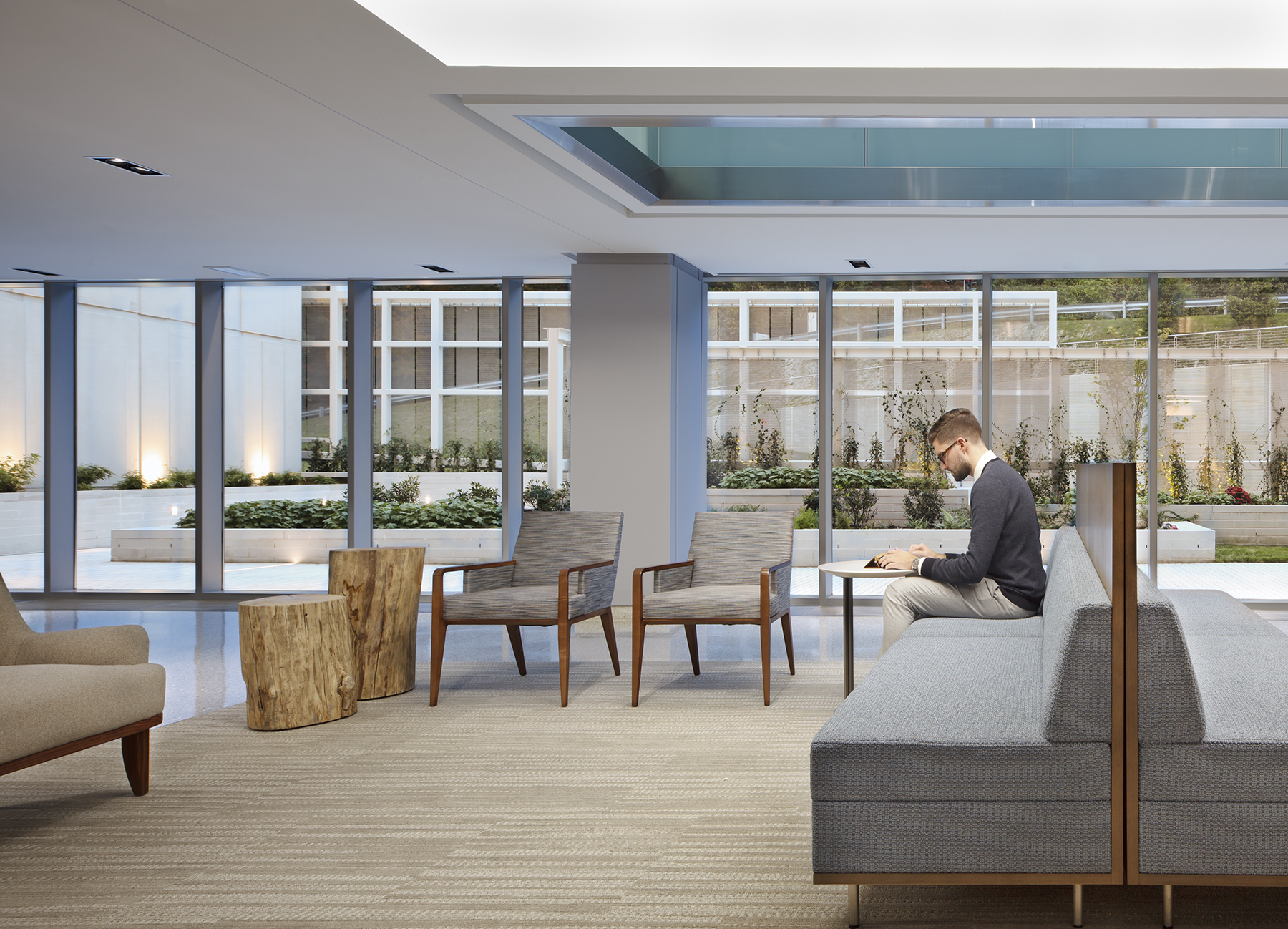Controlled studies confirm what cancer patients know intuitively: contact with the natural environment alleviates stress, relaxes blood pressure, and even reduces the need for pain medication. So it is not surprising that many designers strive to organize cancer centers around natural vistas.
In suburban and rural areas, the natural world is near at hand and a cancer center can be surrounded by a garden or a grove of trees. But in urban areas – or on densely developed hospital campuses – the available vistas may be the side of a building, the air handling units on a rooftop, or a sea of parked cars.
In the 1980s, environmental psychologist Roger Ulrich was the first to document the restorative effect of nature on patients in the hospital. Using modern research methods with strict experimental controls, he observed that patients in rooms with window views of trees needed less pain medication, had fewer postsurgical complications, and spent less time in the hospital than those with views of a brick wall. Indeed, on average, they left the hospital a full day earlier.
Other studies measuring blood pressure, muscle tension and heart and brain electrical activity have determined that even three to five minutes spent looking at views dominated by trees, flowers or water can “begin to reduce anger, anxiety and pain, and to induce relaxation.”
It doesn’t even have to be an actual tree. Art work of nature can have a similar soothing effect, whether it is a floor-to-ceiling photograph of a wooded stream or a small framed painting of a savannah. The leading researchers of Evidence-Based Art, particularly Dr. Upali Nanda, believe that artwork “is not a mere backdrop for healthcare delivery – it is an integral part of the hospital experience.”
Patients are not the only beneficiaries. Stress is a primary cause of early retirement among nurses and other healthcare workers. Hospitals that can bring nature in, will find that it aids in contentment and retention of staff.
With the healing side of nature in mind, we have designed several cancer centers in densely developed settings that make both patients and staff feel as if they are close to the natural world. We incorporated miniature gardens, discreetly screened objectionable vistas, took advantage of roof-scapes, engaged distant glimpses of the landscape, and made connections with nature for the benefit and comfort of those whose lives have been disrupted by cancer.
There is no limit to the ways you can design nature into the experience of the cancer patient. The natural environment appeals to all age groups and all cultures, particularly when one is sick, but nature must be tamed to reap the full effect. Indoor and outdoor gardens must be maintained by a landscaping firm to ensure that the irrigation system functions efficiently, leaves are swept and plantings trimmed and replaced in a timely fashion. Naturally, buildings that incorporate greenery can obtain LEED innovation credits. Other strategies proven successful include:
• Greenwalls
• Greenroofs
• Sunlight tubes
• Replica plantings
• Video walls
As architects, we are gratified to know that bringing nature into our design strategy will bring some comfort to those suffering from debilitating illnesses.



Recent Comments